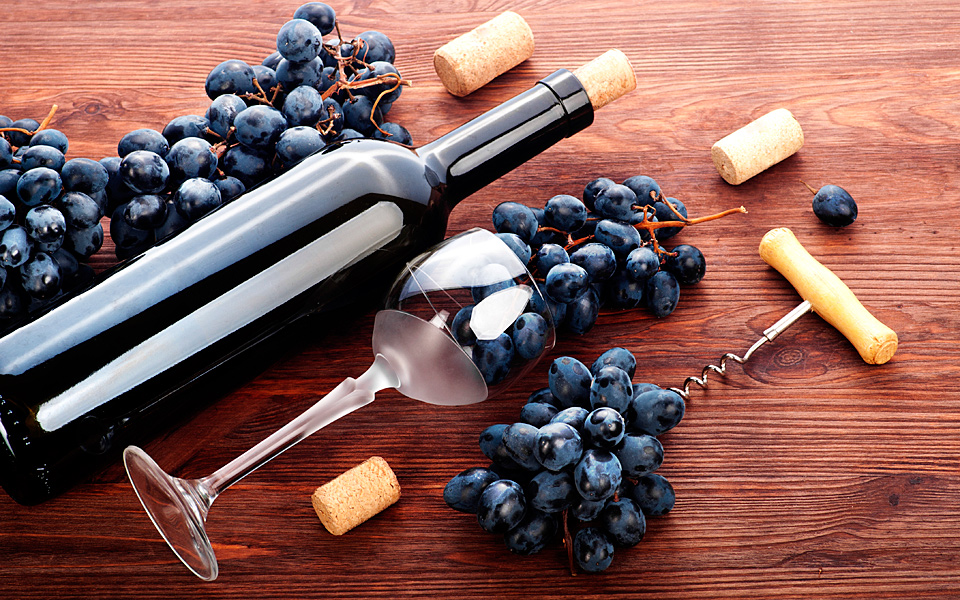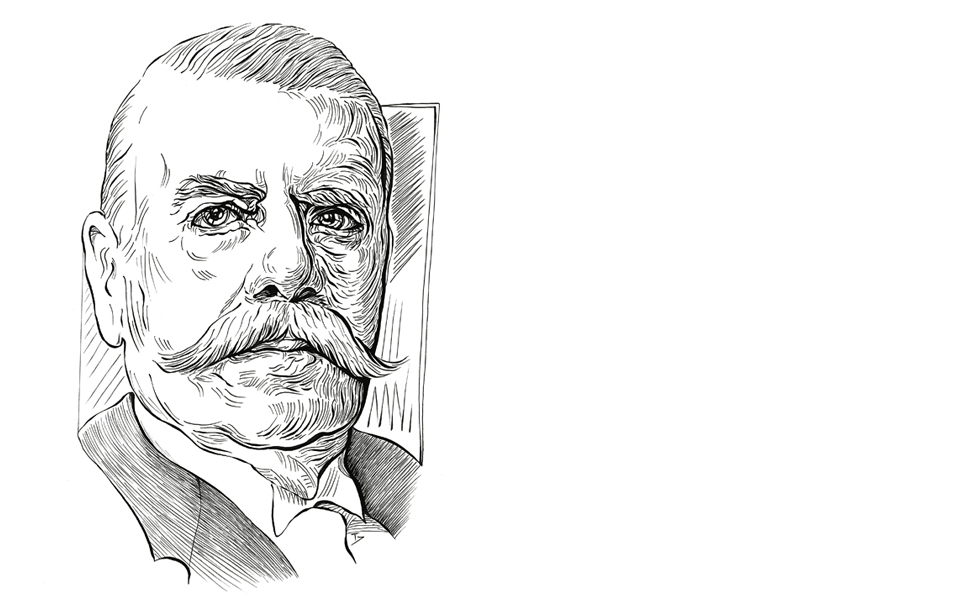
ANDREAS CAMBAS: THE RESTLESS SPIRIT
When Andreas Cambas was born in 1851 in Athens, Greece was struggling to recover from 400 years under the Ottoman yoke: without infrastructure, and with cities and villages decimated, it was centuries behind the rest of Europe. On the fertile land of Attica, farmers mainly grew olive trees, and Andreas was the first to foresee that grapes could once more become a source of wealth, as they were in the past. He bought up several plots in Kantza, in the northeast, and after studying the methods applied by the Europeans, planted his first vines. He was soon producing fine wine and plenty of it. Yet Cambas was not one to rest on his laurels and despite pressure from his family, who thought him a lunatic, he sought to expand. In 1887 he developed a model distillery in Kantza, with a massive Mareste pot still bought in Bordeaux to produce cognac. He had put himself on the path to triumph: two years later and with exports already having started, his cognac was presented at trade fairs in Athens and Paris, winning the top prize. It comes as no surprise that the name Cambas has become synonymous for Greeks with wine and spirits.
Cambas’ contribution was also significant in another respect: In the early 20th century he took a significant step for the evolution of Greek winemaking by inviting a group of French experts to identify locations outside of Attica that would be suitable for vine growing. The compass pointed south to the plateaus of Arcadia, where the climate and soil provided the ideal conditions to grow sweet Moschofilero, Asprouda and Mavrouda, all native varieties. And so, a precious seed was planted…
TODAY | The Cambas company passed into the hands of Boutari Winery in 1992, but the original founder is still a household name. VISIT | www.boutari.gr
“He had put himself on the path to triumph: two years later and with exports already having started, his cognac was presented at trade fairs in Athens and Paris, winning the top prize.”
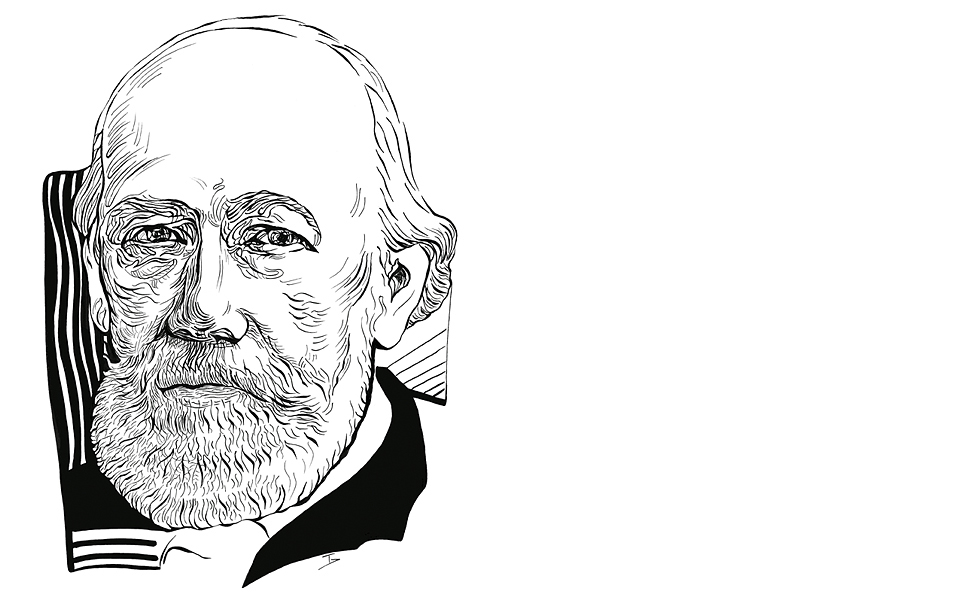
GUSTAV CLAUSS: A TALE OF LOVE
Bavarian Gustav Clauss (born in 1825) worked for the German currant export company Fels in the Greek port city of Patras in the mid-19th century. He became so enamored with the Achaia region and with life in its then-cosmopolitan capital that he decided to settle down for good. He bought 6 hectares on the foothills of Mount Panachaiko, built a country home and planted fruit trees and vines. He named his estate Gutland, or Good Land, and took the next step in 1861 by launching into the winemaking business and creating Achaia Clauss, Greece’s oldest commercial wine producer.
With large stone buildings nestled in verdant gardens and orchards, a spectacular view over Patras and ornately carved barrels (true works of art), his winery acquired a reputation that soon traveled beyond Greek borders. As for its products? The most famous is the wonderful sweet red that first circulated in 1873 under the name 601 after the number Clauss had given the secret recipe in his handwritten notebook. Soon after he called it Mavrodaphne (also sold as Mavrodafni), in honor of his beloved, a black-eyed Greek beauty called Daphne, who died at a very young age.
Clauss himself died in 1908 and many important personages have passed through Achaia Clauss’ Imperial Cellar, thus named after Empress Elisabeth (Sissi) of Austria after her visit: from Scottish biologist Alexander Fleming and Greek statesman Eleftherios Venizelos, to British army commander Bernard Montgomery and shipping empire heir Alexander Onassis. Each of the guests carved their names into barrels and paid their respects to Good Land and the wonderful wines of the Bavarian who had made Greece his second home.
TODAY | The company belongs to businessman Nikos Karapanos and continues to produce wine. Some 200,000 visitors are welcomed to the site each year. VISIT | www.clauss.gr
“Clauss named his estate Gutland, or Good Land, and took the next step in 1861 by launching into the winemaking business and creating Achaia Clauss.”
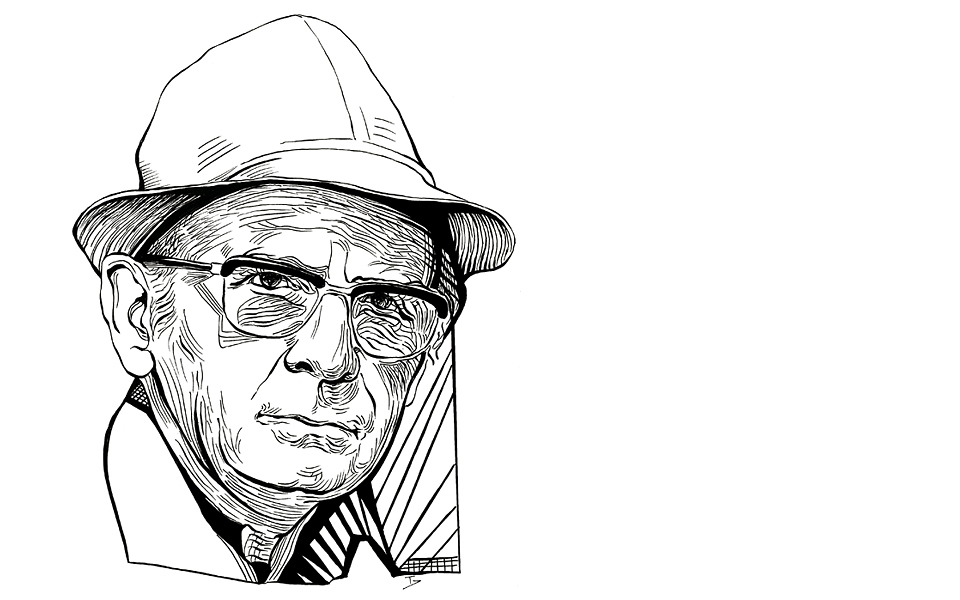
EVANGELOS TSANTALIS: BUILDING FROM SCRATCH
Greece’s biggest wine producing company was born thanks to the passion of one man who built a strong brand from scratch: Evangelos Tsantalis. His family came to Greece from Eastern Thrace in 1922 with nothing more to their name than a cart and an ox, and settled in Serres. His father began making wine and ouzo, teaching all five of his children his tradecraft. But Evangelos had a burning ambition for something of his own. He left for Thessaloniki and in 1945 started a small distillery producing ouzo that was soon the talk of the town.
The business of 300 square meters soon grew to 5,000 and in 1970 he opened a winery in Naoussa. This “patriarch,” however, is also distinguished for developing the exceptional vineyards of Mount Athos. Evangelos would often visit the renowned monastic community to hunt. In Chromitsa, the glebe of Aghios Panteleimonas Monastery, he happened to come across an abandoned vineyard and, after getting the green light from the monastery’s Russian monks, started cultivating it. The monks called the area “kormilitsa,” after the Russian words for wet nurse, because it fed the monastery. Its vines eventually gave birth to Agioritiko and the red Kormilitsa Gold, which is produced in just a few thousand bottles a year, travels to markets all over the world and costs around 600 euros to acquire.
TODAY | Tsantali cultivates 600 hectares of privately owned vineyards, produces 13 million liters of wine and 2.5 million liters of spirits (ouzo and tsipouro), and exports to 60 countries. VISIT | www.tsantali.com
“The business of 300 square meters soon grew to 5,000 and in 1970 he opened a winery in Naoussa.”
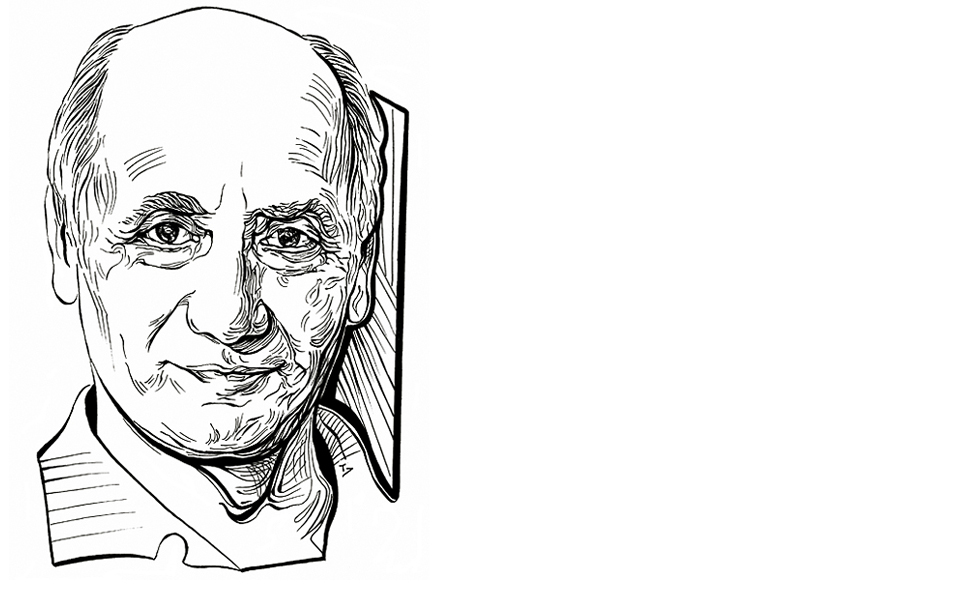
THANASSIS PARPAROUSSIS: THE RISK-TAKER
Raised in the business of wine and spirits (both his father and uncle were distillers), Thanassis Parparoussis believed in something others thought a pipedream: that Greek wines could go beyond bulk sales and make it onto the global map.
He was one of the first Greeks to study oenology at the time, going to Dijon in the 1960s. “The professors there spoke of wines as though they were works of art,” he remarks. “They didn’t hold us in very high regard and insisted that we would never produce great red wines in Greece, just sweet wines. That was when I made a bet…” He returned to Greece, opened a state-of-the-art winery near Patras in 1974 and won the bet. Using the innovative technique of dry vinification used for sweet Mavrodaphne he created Taos, an excellent red.
He has passed on his philosophy to his two daughters – Dimitra, an economist, and Erifili, an oenologist – who work by his side. The Parparoussis Winery now has 10 hectares, where respect for nature stands above all else. “Everything in the natural environment is a chain and good wines come from harmonious coexistence,” says Parparoussis.
TODAY | The Parparoussis Winery produces 11 labels of wines and spirits, and exports over 60 percent of its production. VISIT | www.parparoussis.com
“He returned to Greece, opened a state-of-the-art winery near Patras in 1974 and won the bet.”
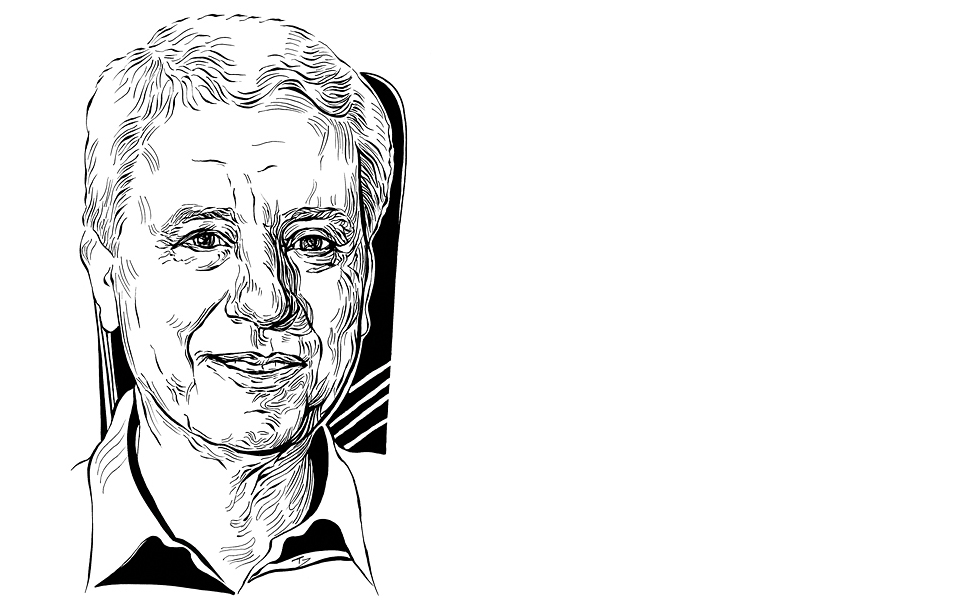
VANGELIS GEROVASSILIOU: GOING IT ALONE
The son of a Thessaloniki farmer, Vangelis Gerovassiliou studied oenology in Bordeaux in the mid-1970s, where he got his degree and had the good fortune to work alongside professor Emile Peynaud, guru extraordinaire of the oenological sciences, sampling the wines of all the famous French chateaux. Peynaud went on to recommend the young Greek for a position as oenologist at the historic Porto Carras winery in Halkidiki, where Gerovassiliou was destined to spend the next 22 years of his career (1976-1999). In the meantime, he decided to try his hand at winemaking. On 2.5 privately owned hectares he planted only whites, mainly Malagousia (relatively unknown at the time) and Assyrtiko, as he was a firm believer in indigenous varieties, even though the prevalent trend in Greece was to cultivate Cabernet Sauvignon and Chardonnay. Construction on his state-of-the-art winery was completed in 1999 and since then Ktima Gerovassiliou has been at the forefront of developments in Greek wine. There is only one recipe for success, he says: “You must first study the earth and the varieties, plant good vineyards and produce high-quality wines, and then – with marketing – create a legend.” Gerovassiliou was also among the first in his field to take action to promote Greece’s wine heritage.
TODAY | The privately owned single vineyard of Ktima Gerovassiliou covers an expanse of 56 hectares. It produces 300,000 bottles in 10 labels a year, and exports 35 percent of its yield. VISIT | www.gerovassiliou.gr
“Construction on his state-of-the-art winery was completed in 1999 and since then Ktima Gerovassiliou has been at the forefront of developments in Greek wine.”
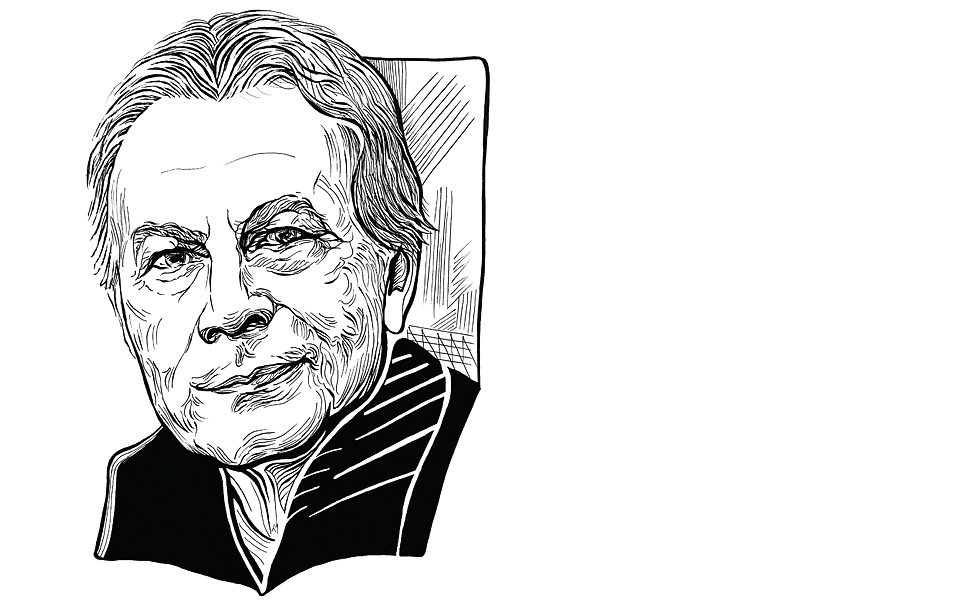
PARIS SIGALAS: THE DREAMER
Winemaking is something of a given for the people of Santorini, a part of day-to-day life. But for Paris Sigalas, vines only took root in his life when he began planting them himself. “It was almost metaphysical, as though my intervention changed a piece of land. I admit I felt like a small god,” he says. A mathematician by training who had done a postgrad in France, he became a teacher and split his time between Santorini and Athens. In 1991, he started the Domaine Sigalas winery on the island, using his grandfather’s old canava (or winery) as its headquarters until he moved production to a new plant eight years later.
He gave up teaching in 2005 to dedicate himself to winemaking and remains determined to make his biggest dream come true, that is, to win recognition for Mavrotragano, a splendid red variety that was at risk of extinction before he took it under his protective wing.
Sigalas was among the first vintners on Santorini to focus on taking the all-important steps: developing a creative bond with the island’s traditions, investing in know-how and quality, and protecting Santorini’s unique wine terroir from the sprawl of rampant tourism development.
TODAY | Domaine Sigalas produces 300,000 bottles a year. A new addition to its line is Tsipouro Sigalas, made from Assyrtiko and Mavrotragano pomace. VISIT | www.sigalas-wine.com
“He gave up teaching in 2005 to dedicate himself to winemaking and remains determined to make his biggest dream come true, that is, to win recognition for Mavrotragano, a splendid red variety that was at risk of extinction before he took it under his protective wing.”
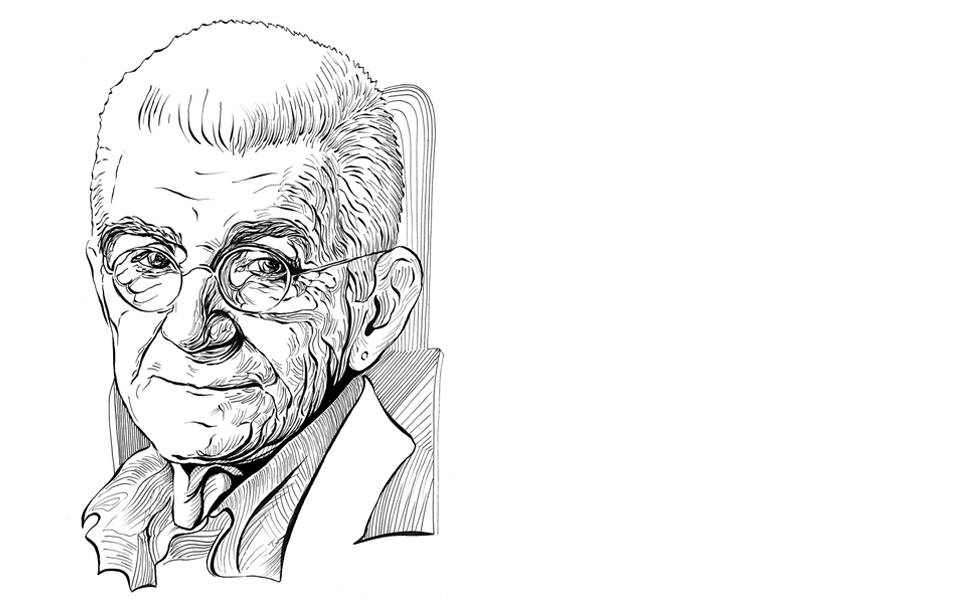
YIANNIS BOUTARIS: THE HOUSEHOLD NAME
His grandfather and namesake was one of the first Greek vintners to put wine in a bottle, in 1879 in Naoussa. It was such a success that by the early 20th century the winery had opened a branch in Thessaloniki and added ouzo to its roster. Yiannis Boutaris studied chemistry and oenology, and then, in 1969 at the age of 27, took over the family business.
At a time when vine cultivation was being taken seriously only by a handful of farmers, he understood that you couldn’t produce wine unless you focused first on the primary ingredient.
“A lot of wineries cropped up that looked only at the packaging, not the content. It’s like opening a restaurant without a chef and sinking all your money into the decor,” he says. He bought a large plot in Naoussa and began planting his own vines. Thanks to his efforts, neglected varieties like Xinomavro, Roditis and Malagousia were able to express their true colors. He was also a pioneer in marketing: his white Lac des Roches was the first Greek wine to be backed by an advertising campaign.
Boutaris has served as mayor of Thessaloniki since 2011. So, is he a vintner or a politician? “In 50 years as a winemaker, I have left my mark in the field. If I manage to do this in politics as well, people will say I was multitalented when I die…”
TODAY | Τhe Boutari company has been split into two: Kir-Yianni, which is run by Yiannis’ son, Stellios, and Boutari, owned by his brother Constantinos. Both enjoy robust exports. VISIT | www.kiryianni.gr
“In 50 years as a winemaker, I have left my mark in the field. If I manage to do this in politics as well, people will say I was multitalented when I die…”
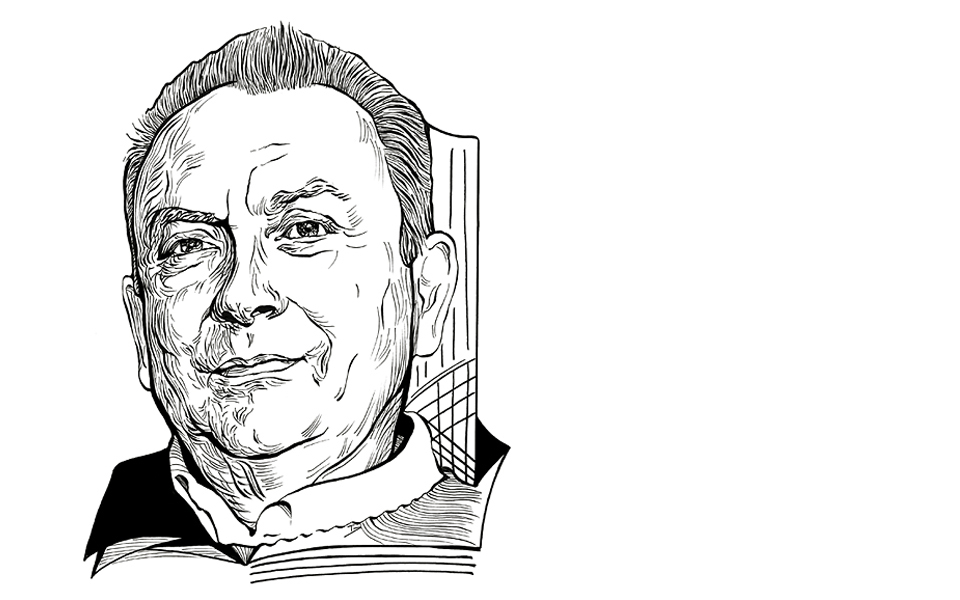
GEORGE SKOURAS: AT THE FOREFRONT
George Skouras was the first winemaker in Greece to employ the Stelving bottling method (which uses a screw-top) for white wine, at a time when other winemakers wouldn’t dare. He was also the first in the country to sell magnums (with a volume of 1.5 liters), and the first to apply to winemaking the Spanish Solera method. He developed an entirely new school of winemaking by mixing an indigenous variety with a French one (an Agiorgitiko with a Cabernet). Perhaps most importantly, he was among the first to believe that Greek wines could have a bright future on the international scene. His winery in Argos was among those that were instrumental in the rebirth of winemaking in Greece in the 1980s. And Skouras himself was – and continues to be – a reference point for younger generations of winemakers. Skouras left Greece for France in 1980 to study agriculture at the University of Dijon in Burgundy, but changed to winemaking. In 1988, he released the innovative Megas Oenos (which combined Agiorgitiko and Cabernet grapes) and it remains his winery’s flagship wine to this day. “It is my first love,” Skouras says.
TODAY | The Skouras Winery produces about 800,000 bottles per year (under 17 labels), more than 50 percent of which are exported. VISIT | www.skouras.gr
“His winery in Argos was among those that were instrumental in the rebirth of winemaking in Greece in the 1980s.”
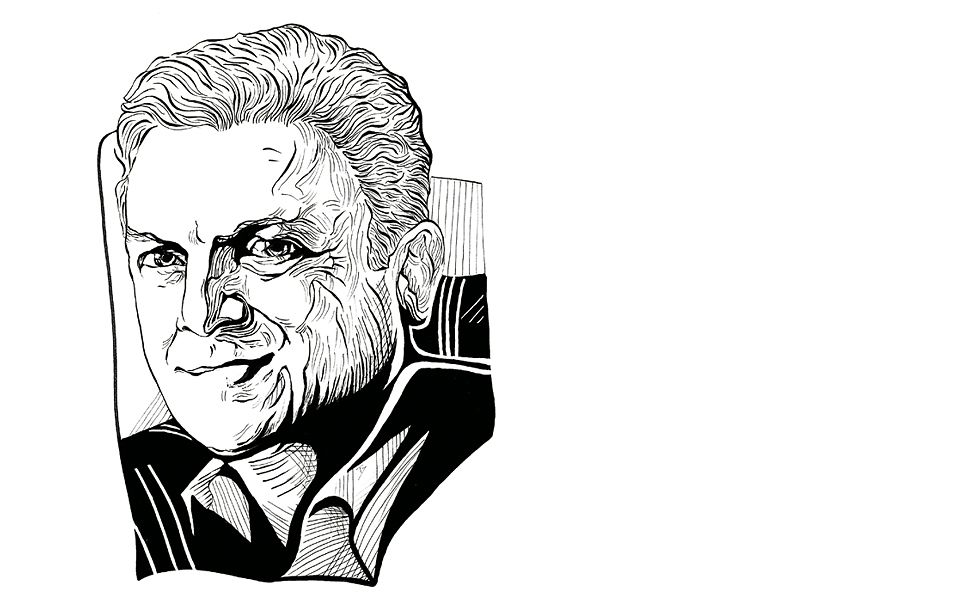
KYRIAKOS KYNIGOPOULOS: THE MASTER “MECHANIC”
At Kyriakos Kynigopoulos’ laboratory in Beaune, France, clients come from around the world: 200 French wineries and 80 more from the US, Argentina, Chile, South Africa, Spain, Italy, Switzerland, Belgium and Cyprus. Kynigopoulos is considered a master of oenological analysis and his lab handles roughly 30,000 samples per year.
Does this mean that the wines that millions of people enjoy across the world are, to a large extent, his handiwork? Kynigopoulos laughs at the suggestion. “Of course not! Winemaking is like Formula One racing. The winemaker is the driver; we just help fine tune the engine.” Kynigopoulos was born in Thessaloniki. His grandfather had a vineyard but, of his 13 grandchildren, only young Kyriakos would follow him into the fields. He was 5 or 6 years old. “From then on, I was hooked,” he says. He studied at the University of Burgundy and was set to return to Greece when a scholarship changed that plan and set him on the path to a bright career. Almost 30 years later, has not forgotten his homeland and works with many Greek wineries as a consultant.
How does he view Greek wine? “It is continually making progress. The only problem is that the majority of wines are made to ‘go’ where the consumer wants them. The challenge is to drive the consumer. Some Greek winemakers, fortunately, have started to do just that.”
TODAY | Kyriakos Kynigopoulos lives in Beaune in Burgundy. His laboratory collaborates with 280 wineries in North and South America, Europe and South Africa. VISIT | www.burgundia.fr
“Winemaking is like Formula One racing. The winemaker is the driver; we just help fine tune the engine.”
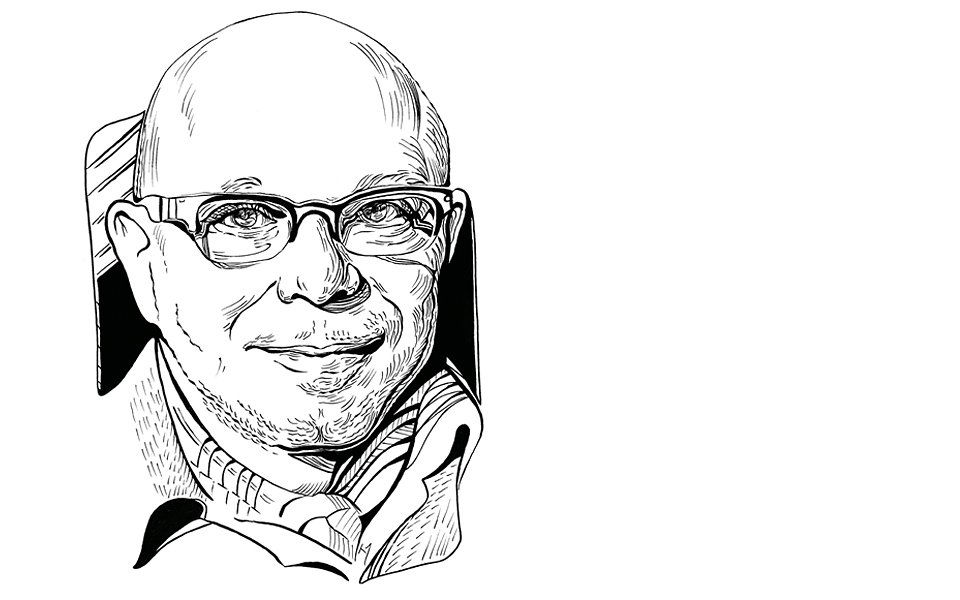
ATHANASE FAKORELLIS: THE FLYING OENOLOGIST
When Athanase Fakorellis went to France in the 1970s to study pharmacology, a serious illness left him bedridden for the first year. “What are you going to do now?” his friend, acclaimed oenologist Giorgos Vekios, also studying at Bordeaux, asked him. “Do you really want to become a pharmacist, selling medicines from behind a counter like a grocer? You should become an oenologist,” he urged him. “I was like a blank slate and became completely enamored with that world. I enjoyed every little new thing I learned,” says the now distinguished oenologist. Fakorellis got his degree and went on to work with some of the biggest chateaux in the country – in Bordeaux, Cognac, Nantes and Burgundy. Yet he never severed his ties with Greece and made his debut in 1990 as oenologist at Canava Petros Nomikos in Santorini. As his reputation grew, he worked with a slew of Greek wineries, traveled extensively – consulting in Italy, Lebanon, India and China – and worked with influential oenologist Michel Rolland.
How does the “flying oenologist,” as he’s known, judge Greek wine? “It has made enormous progress. France has been promoting its grand crus since the mid-19th century, so the fact that some Greek wines have managed to reach that level in just a few decades is remarkable.” His advice to Greek winemakers? “Concentrate on the vineyard, because that’s where it all begins, and on native varieties. No more Merlots; no more blends with international varieties!”
TODAY | Fakorellis works with dozens of wineries around the world. He also has two vineyards of his own in France and is registered as an oenology and wine expert at Bordeaux commercial court.
“I was like a blank slate and became completely enamored with that world. I enjoyed every little new thing I learned.”

